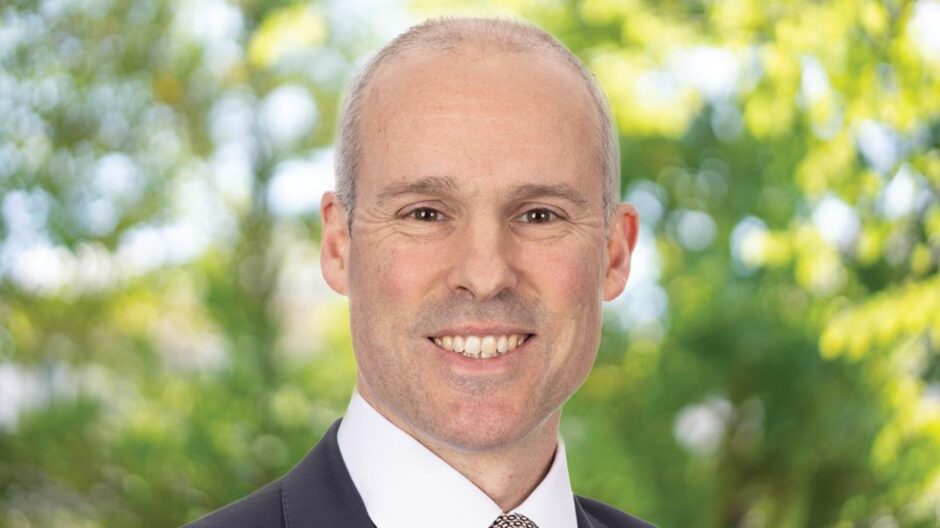
As the newly incumbent Labour party ramps up its clean energy strategy, all corners of the industry watch on to see how the government’s priorities impact the energy mix. Central to this vision is a resilient, future-fit, better-connected UK electricity grid.
In the first of a two-part interview series, Energy Voice spoke to Ben Wilson, chief strategy and regulation officer at National Grid, to gauge the operator’s reaction to Labour’s win and its appraisal of the challenges at the core of the transition.
Energy Voice: How would you define the role of National Grid in supporting Labour’s energy policy going forward?
Ben Wilson: One of the good things I would say about energy policy in the UK is it is reasonably bipartisan and so there’s a high degree of continuity in terms of policy. We’re very careful to work with all sides in politics, so I think this transition is something that we’re working with effectively and we very much welcome the announcement of ‘Mission Control’ headed by Chris Stark.
Whether we’re aiming for 2030 for a decarbonised electricity system or 2035, both of those targets are challenging, so it’s important that there is a kind of mission mentality to achieve it. So we do think that what they’ve set up there and announced is really important.
There are a number of things that we think need to happen in order to deliver those targets. Firstly, we do need a clear strategic plan for the energy system, so the concept of this Strategic Spatial Energy Plan (SSEP) is very important and we’d be keen to see that pushed on. The SSEP is supposed to set out where new demand and supply will be and then what network is required to build it. And then that plan needs to be consulted on so that it has broad support, and it needs to trigger investment signals, planning and permitting.
We do need to continue to push through reforms on planning and permitting, and also on grid connections. It’s really great to see that the chancellor, Rachel Reeves, announced a commitment around planning and permitting. That’s excellent and we need to see more coming through on that.
We’re also very positive about GB Energy. We think it can really help in a number of areas. But I think, most importantly, in the nature of supply chain and skills, and there’s a massive prize for the UK here.
To really generate significant jobs growth and industrial capacity, as part of this new green economy, we could be a renewables powerhouse. But only if we execute effectively – and then we need to get the right governance in place to do all of this. And again, there are a number of building blocks coming through. So Mission Control is very positive.
I think the separation of the Electricity System Operator currently under National Grid to government, to become the national energy system operator, is really important. So I think there’s a lot to like about the policy platform of the new government.
What are the key challenges facing National Grid’s infrastructure upgrade strategy?
We’re very conscious of the scale of the challenge and opportunity ahead of us and the responsibility we have to make sure that this is executed well.
It does come back to a few of those points that I made earlier. Just to give you a feel for the scale, we will build more infrastructure between now and 2030 – multiple times more – than we built in the last 30 years in terms of transmission.
When we announced our results in May, we said we would invest £60 billion over the next five years – £31 billion of that is in the UK. It’s almost double the previous five years, so it’s a massive step up in investment.
There are a number of things that need to come right for that to happen. There is that overall spatial planning piece [the SSEP] for the UK that’s extremely important. We do need to continue to work with Ofgem and government on regulation – when you go through a kind of step-change paradigm shift like this, in terms of the scale of investment, inevitably economic regulation has to show some flexibility.
And I think we’re very pleased with Ofgem – they need a lot of credit for what they’ve done, particularly on ASTI [Accelerating Strategic Transmission Infrastructure]. It’s the new regulatory regime for major projects that they introduced about 18 months ago. It’s a very flexible framework that allows us to make progress at pace.
We’ve also touched on the importance of connections. We do have a very large connections queue and that’s good news in many ways, because it shows the UK is very attractive for people wanting to build renewables projects – but actually, there’s oversubscription in that queue. There are more projects in the queue than the country needs, let alone for 2035 or even for 2050. And so it means not all those projects are actually viable prospective projects.
It’s important to note this is an industry problem, because the way that the connections queue and the connection process works is governed by industry codes. So all of us, right across the industry, we all need to come together to reform those arrangements so that they’re fit for purpose going forward.
When things change, the rules have to change so that we can accelerate projects that are ready ahead of projects that are not ready. And I think we also feel that there would be a link between how the queue is treated and the SSEP. At the end of the day, as a country we are going to have to have a view as to what generation mix we require for 2030 or 2035 or 2050. And the queue is going to have to acknowledge some of those choices.
Obviously there are key challenges – integration, electrification, managing supply and demand – is there any particular bottleneck or obstacle you’d like to flag?
Let me just come back and reinforce supply chain and skills, and I will also link it to communities. You know, we’re very conscious of a number of things. Some of the challenges I’ve mentioned in terms of the roll out, we’re also conscious of the impact of infrastructure on local communities.
It is important that we do consult and there’s effective engagement, and there needs to be a fair deal for communities – which means if you’re an area which is hosting a lot of new infrastructure, I think it would be great if there’s then jobs and growth not just for the life of the project, but on an ongoing basis.
The supply chain is very constrained. You know there’s not enough capacity in the supply chain globally for everybody to do what they need to do. A couple of examples of that: HVDC cables for offshore – there are a very small number of suppliers and they’ve got very big order books; converter stations… And so being able to partner with the supply chain, it is actually a necessity and we have to find a way to give long-term order books to the supply chain so they can establish new capacity.
The next few CfD (contracts for difference) rounds are going to be very important. You know, the offshore wind projects require contracts for difference for their business models. And so it’s important that the next few rounds are successful and deliver adequate capacity to the system. And I know that everybody is very focused on that.
Could you elaborate a bit more on the role of interconnectors – it’s a unique situation, because as you’ve highlighted there is this huge physical challenge almost on the scale of a new industrial revolution. Or industrial revolution 2.0, if you like.
I’m very excited by interconnectors and what they can bring to the country – what they already are bringing to the country. And it’s important to note that National Grid in the UK, we are the global leader in subsea electric interconnectors, we have the largest portfolio in the world.
That includes the two longest subsea interconnectors in the world: Viking link to Denmark, which is now the longest, and then North Sea link to Norway. The UK is absolutely world class in this area and we’re a net energy importer. So for us, the route to energy security is diversity.
If you’re a net importer, then the more diversity of energy options you have, the more secure you are. And interconnectors play a key role in that. We’re now interconnected to multiple countries and there are third-party interconnectors being built too. There’s one being built to Germany, which will have an additional resilience. So interconnection is essential in terms of energy security and diversity.
And you can see that working. I’ll give you an example: we have two interconnectors to France, and traditionally they, on balance, import into the UK most of the time because you have a lot of French nuclear traditionally, which is must-run. So the UK, historically, has benefited from the availability of surplus French nuclear power when that is in place. But during the Ukraine war, and with some of the capacity constraints on the French side over the last couple of years, there have been periods, important periods, where actually we’ve exported power to France.
So those interconnectors have served a really important role in terms of security of supply for both the UK and France. I think the other thing that is important about interconnectors is, if you imagine somebody wanting to set up a new large offshore wind project, then that project will look more prospective if there is the opportunity for them to export power at times when demand in the UK is low.
This improves the business case for domestic renewables. It’s going to be easier for us to hit our targets and deliver the transition if we have more interconnection. So there’s a real benefit from interconnection, both in terms of security of supply, but also economic and therefore also environmental, because it stimulates more renewables – and of course, most of the power that comes in through the interconnectors is also clean power.
And then there’s a long-term vision that you can see them contributing to, which is the potential for a future interconnected North Sea grid one day. And when you think of Aberdeen, you know the UK was a powerhouse in oil and gas in the North Sea. You can see that that could be the case again, but this time in clean industries such as offshore wind.

